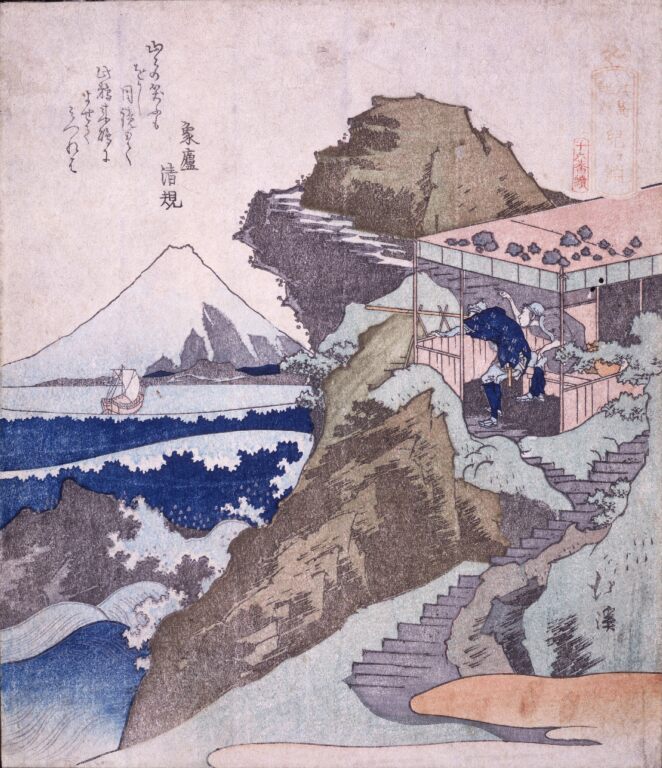資料名 |
Chronicle of a Journey to Enoshima Chigo-ga-buchi Abyss |
解説 |
Artist: Totoya Hokkei Production date: 1830-1844 (early Tempou era) No publisher’s seal A man is looking at a view through his telescope from Enoshima Island. The Edo period record indicates that viewing scenery through telescope was a very popular custom during Edo period. As a typical surimono work, the lines of wave crash, surface texture of rocks and the kimono pattern of a man on the right are luxuriously decorated with gindei (a pigment that contains silver). “Chronicle of a Journey to Enoshima” is a series of surimono that illustrated landscapes and products related to Enoshima Island. Surimono is high quality woodblock prints that include both kyouka poems (Comic verse composed of 31 syllables) and illustrations related to the poems. Since surimono was produced not for sale but made privately by the group of kyouka poets, the artists who produced the illustrations fully expressed their supreme talents and skills such as detailed curving techniques and high skill of the printing technique in a small format. The indications in the several works specify that there were originally 16 works in this series. However, only 14 works, “Takanawa, the starting point”, “Samezu”, “Omori”, “Kamata”, “Rokugou”, “Tsurumi”, “Kanagawa”, “Hamagawa”, “Shimo-no-miya”, “Kami-no-miya”, “Hongu”, “Chigo-ga-buchi”, “Manaita-iwa”, and “Ryudou” are currently discovered. This series was produced for the memory of kyouka poetry circle’s journey to Enoshia Island. The illustrations were produced by Totoya Hokkei and he was a pupil of Katsushika Hokusai. Hokkei was known for his premier talent with surimono, especially related to kyouka, and it is said his skill even surpassed that of Hokusai. |
資料番号 |
10017 |







